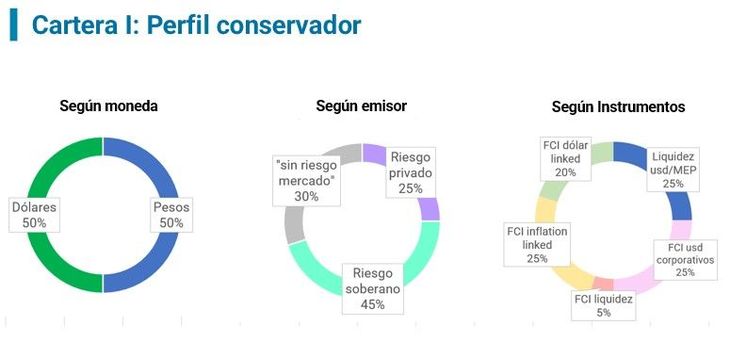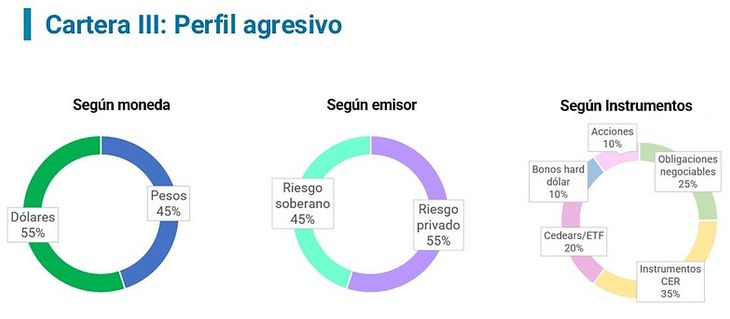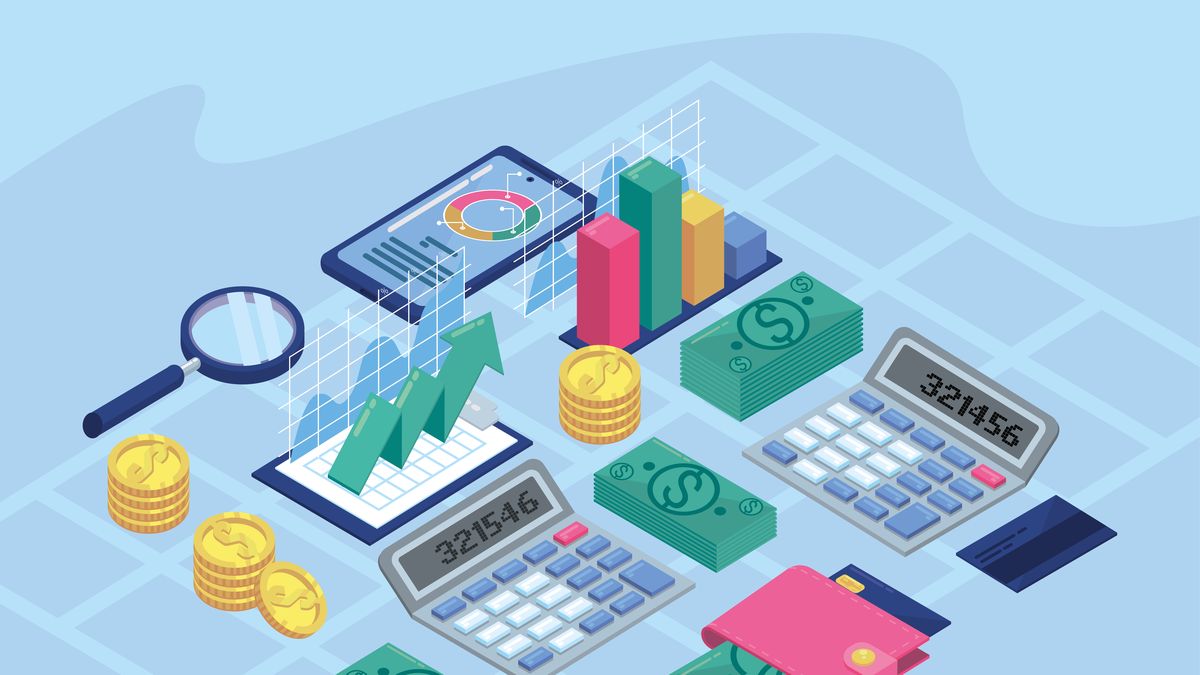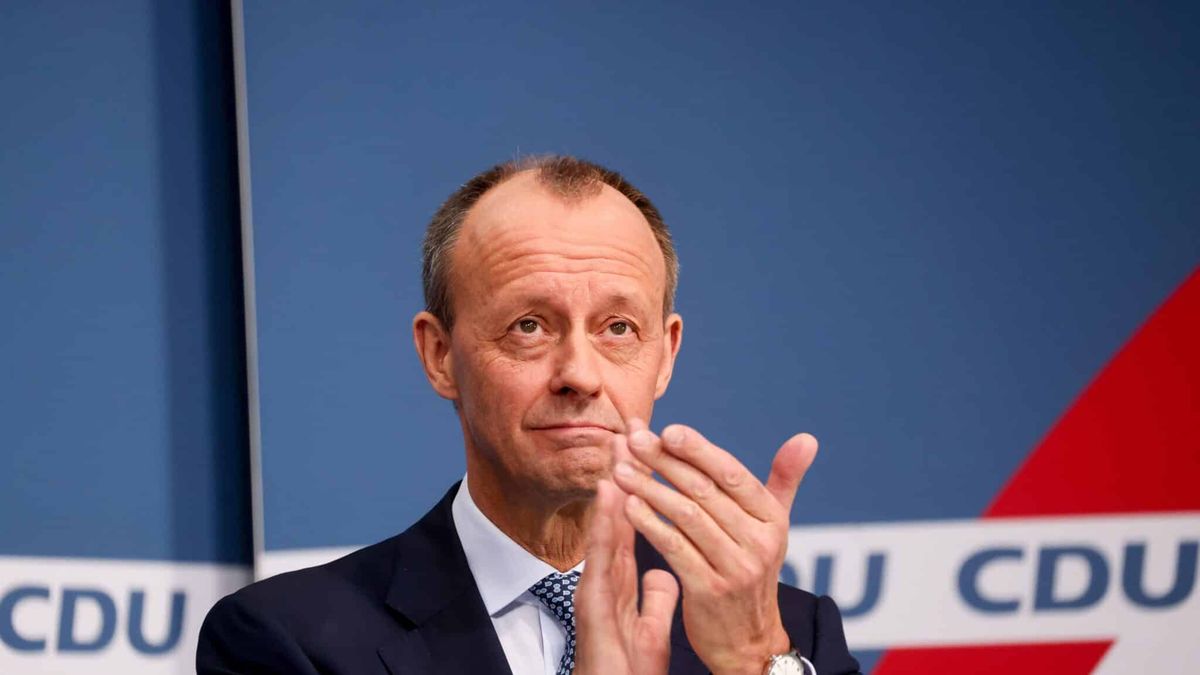What is risk in finance? By definition, it is the probability of some negative event that causes losses in our portfolio. It is the possibility that the investment will not meet our objectives. Risk in finance is measured by the volatility of an asset or portfolio.
But also the risk is the possibility of a default or cessation of payments by the issuer. The Argentine is familiar with this term after having in Argentine history nine debt defaults in foreign currency by the Argentine government. The private ones also have this risk.
Going back to the beginning, in addition to the objective and term, the investor must think about what currency he wants to position himself in (something that will arise from the objectives) and in the countries in which he wants to invest.
Thus, three types of investors arise.
Clipboard01.jpg
Conservative: Prefer safety over profitability. For example, you may feel comfortable with a fixed term, which is an instrument with a certain return, since you know the rate of return in advance and the term. The risk would be that the bank does not return the principal plus interest. In reality, for this to happen, the bank would have to go bankrupt, or there would be a national crisis that today is not even close. But the most important counter is the loss of purchasing power in a context of high inflation. Fortunately, in Argentina, we have UVA fixed terms, which adjust principal and interest for inflation.
For the conservative we recommend the purchase of the MEP or CCL dollar, which we consider a liquid asset without market risk. But also common investment funds in dollars that invest in corporate bonds. In pesos, we suggest FCI dollar linked to follow the official dollar price in case there is an adjustment, FCI inflation linked to be covered and FCI money market to have immediate liquidity.
Clipboard01.jpg

Why do we recommend FCIs? Because they are managed by professionals who try to obtain the best performance given the objective of the fund, so the investor does not have to take responsibility for the active management of the portfolio. Generally, they have immediate liquidity (the MM) or 24 or 48 hours (those who invest in securities listed on the stock exchange). The disadvantage of the FCI is that we do not know in advance what the return will be, since it depends on the difference between the entry and exit prices.
Moderate: You are willing to take some risk to get more return. Instead of the peace of mind of a fixed term, you could choose a national Treasury bill that yields above 80% (LEDs to January) or a paper that adjusts for inflation (CER). The first difference will be the issuer risk, in this case, the state. But it is also important to note that these papers are somewhat volatile, since they are traded daily on the market. At the end of the investment, the individual receives the interest agreed upon at the time of purchase, but in the middle he will be tied to the fluctuations of the market. Or you could choose to invest in a bond from a private company, in dollars, where the risk is that of the company and its sector.
Clipboard01.jpg

We no longer recommend FCIs to this type of investor, but rather that they themselves buy securities on the market: Negotiable obligations (bonds from leading companies that pay interest between 5 and 10% annually in dollars), Letters and CER Bonds, that adjust against inflation and some Cedears that are certificates of deposit of companies listed abroad. In this way, the investor can access Apple, Microsoft, Coca Cola, for example. Within the Cedears, we recommend the “calm” ones, those with beta less than 1, since in the face of market declines, they will lose less (but will also rise less than the market). In the face of high inflation in the US, where the government is trying to curb it by raising rates, being in consumer companies, with stable demand, seems to be a good idea. However, thinking about the long term, we must incorporate technology companies that are dedicated to artificial intelligence, semiconductors or green energy.
Aggressive: he knows the market, he has experience so he has an idea of the risks. Incorporate volatile assets into your portfolio that promise big profits. Of course, risk more. It tends to invest in more sophisticated assets, such as ETFs or derivatives, as well as high beta stocks.
Clipboard02.jpg

To this investor we recommend a portfolio similar to the previous one, but we add Argentine bonds and stocks in a bet on the change of government. Currently, the bonds are at the default price and the companies are valued at the auction price. If there is a change in command, with a more pro-market candidate, these assets have a lot to recover.
financial advisor
Source: Ambito
David William is a talented author who has made a name for himself in the world of writing. He is a professional author who writes on a wide range of topics, from general interest to opinion news. David is currently working as a writer at 24 hours worlds where he brings his unique perspective and in-depth research to his articles, making them both informative and engaging.




